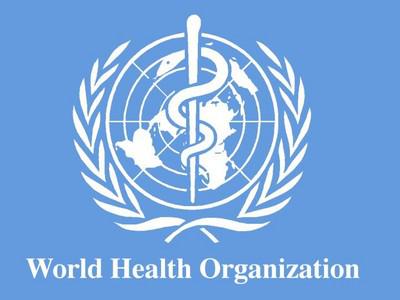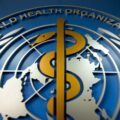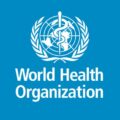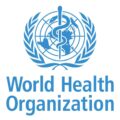The World Health Organization (WHO) defines stroke as “rapidly developing clinical signs of focal (or global) disturbance of cerebral function, with symptoms lasting 24 hours or longer or leading to death, with no apparent cause other than vascular origin”. By applying this definition transient ischemic attack (TIA), which is defined to last less than 24 hours, and patients with stroke symptoms caused by subdural hemorrhage, tumors, poisoning, or trauma are excluded. Worldwide, cerebrovascular accidents (stroke) are the second leading cause of death and the third leading cause of disability. Stroke, the sudden death of some brain cells due to lack of oxygen when the blood flow to the brain is lost by blockage or rupture of an artery to the brain, is also a leading cause of dementia and depression.
Globally, 70% of strokes and 87% of both stroke-related deaths and disability-adjusted life years occur in low- and middle-income countries. Over the last four decades, the stroke incidence in low- and middle-income countries has more than doubled. During these decades stroke incidence has declined by 42% in high-income countries. On average, stroke occurs 15 years earlier in – and causes more deaths of – people living in low- and middle-income countries, when compared to those in high-income countries. Strokes mainly affect individuals at the peak of their productive life. Despite its enormous impact on countries’ socio-economic development, this growing crisis has received very little attention to date.
What are the different types of strokes?
There are three main types of stroke: transient ischemic attack, ischemic stroke, and hemorrhagic stroke. It’s estimated that 87 percent of strokes are ischemic.
Transient ischemic attack
Doctors also call a transient ischemic attack (TIA) a warning or mini-stroke. Anything that temporarily blocks blood flow to your brain causes a TIA. The blood clot and TIA symptoms last for a short period of time.
Ischemic stroke
An ischemic stroke occurs when a blood clot keeps blood from flowing to your brain. The blood clot is often due to atherosclerosis, which is a buildup of fatty deposits on the inner lining of a blood vessel. A portion of these fatty deposits can break off and block blood flow in your brain. The concept is similar to that of a heart attack, where a blood clot blocks blood flow to a portion of your heart. An ischemic stroke can be embolic, meaning the blood clot travels from another part of your body to your brain. An estimated 15 percent of embolic strokes are due to a condition called atrial fibrillation, where your heart beats irregularly.
A thrombotic stroke is an ischemic stroke caused by a clot forming in a blood vessel in your brain. Unlike a TIA, the blood clot that causes an ischemic stroke won’t go away without treatment.
Hemorrhagic stroke
A hemorrhagic stroke results when a blood vessel in your brain ruptures or breaks, spilling blood into the surrounding tissues.
There are three main types of hemorrhagic strokes: The first is an aneurysm, which causes a portion of the weakened blood vessel to balloon outward and sometimes rupture. The other is an arteriovenous malformation, which involves abnormally formed blood vessels. If such a blood vessel ruptures, it can cause a hemorrhagic stroke. Lastly, very high blood pressure can cause weakening of the small blood vessels in the brain and result in bleeding into the brain as well.
What are the symptoms of a stroke?
The different stroke types cause similar symptoms because each affects blood flow in your brain. The only way to determine what type of stroke you may be having is to seek medical attention. A doctor will order imaging tests to view your brain.
The National Stroke Association recommends the FAST method to help identify the warning signs of a stroke:
Face: When you smile, does one side of your face droop?
Arms: When you raise both arms, does one arm drift down?
Speech: Is your speech slurred? Are you having trouble talking?
Time: If you experience any of these symptoms, call 911 immediately.
Additional symptoms that don’t fit in the FAST description include:
- sudden confusion, such as difficulty understanding what a person is saying
- difficulty walking, sudden dizziness, or loss of coordination
- sudden, severe headache that doesn’t have any other known cause
- difficulty seeing in one or both eyes
A TIA will cause these symptoms for a short amount of time, usually anywhere from one to five minutes. However, you shouldn’t ignore stroke symptoms, even if they go away quickly.
What complications can a stroke cause?
A stroke is a medical emergency for a reason — it can have life-threatening consequences. The brain controls the major functions of human life. Without blood flow, your brain can’t manage breathing, blood pressure, and much more. Complications can vary according to the stroke type and if you are able to successfully receive treatment. Examples of complications include:
Behavior changes: Having a stroke can contribute to depression or anxiety. You also may experience changes in your behavior, such as being more impulsive or more withdrawn from socializing with others.
Speech difficulties: A stroke can impact areas of your brain having to do with speech and swallowing. As a result, you may have difficulty reading, writing, or understanding other people when they’re speaking.
Numbness or pain: A stroke can cause numbness and decreased sensation in parts of your body. This can be painful. Sometimes injury to the brain can also affect your ability to sense temperature. This condition is known as central stroke pain and can be difficult to treat.
Paralysis: Because of the way your brain works to direct movement, a stroke in the right side of your brain can affect movement on the left side of your body and vice-versa. Those who’ve had a stroke may not be able to use facial muscles or move an arm on one side.
You may be able to regain lost motor function, speech, or swallowing abilities after a stroke through rehabilitation. However, these can take time to regain.
How are strokes treated?
Treatments for stroke depend on many factors. These include what kind it is and how long it lasted. The sooner you can seek help after a stroke, the more likely you’ll have a better recovery.
Treatments for TIA include taking medications that will help prevent future strokes. These medications include antiplatelets and anticoagulants.
Antiplatelets reduce the likelihood that components of your blood called platelets will stick together and cause a clot. Aspirin and clopidogrel (Plavix) are antiplatelet medications.
Anticoagulants are medications that reduce the buildup of clotting proteins. Several different types of these medications exist, including warfarin (Coumadin) and dabigatran (Pradaxa).
A doctor may also recommend a surgery called a carotid endarterectomy. This removes plaque buildup in the carotid artery of your neck, which is a major cause of stroke.
Ischemic stroke
The ischemic stroke treatments you receive depend on how quickly you get to a hospital. They also depend on your individual medical history.
If you seek treatment within three hours for this type of stroke, your doctor may be able to give you a medication known as tissue plasminogen activator (tPA). This medication, which is delivered through an IV, can dissolve the clot. However, not all people can receive tPA due to risks for bleeding. Your doctor has to carefully consider your medical history before administering tPA.
Doctors can use procedures to physically remove the clot or deliver clot-busting medications to your brain.
Hemorrhagic stroke
Hemorrhagic stroke treatments involve trying to stop bleeding in your brain and reduce the side effects associated with brain bleeding. Side effects may include increased intracranial pressure. Surgical procedures include surgical clipping or coiling. These are designed to keep the blood vessel from bleeding further.
You may be given medications to reduce intracranial pressure. You may also need blood transfusions to increase the amount of blood-clotting materials in your blood to try to stop bleeding.
What is the outlook for each stroke type?
An estimated one-third of people who experience a TIA will go on to have a full ischemic stroke within a year. Seeking treatment reduces the chances of this happening.
If a person has had a stroke, their risk of having another increases. It’s estimated that one-fourth of people who’ve had a stroke will have another within five years.
There are many lifestyle changes you can adopt to reduce your risks of ever having a stroke or a reoccurrence. Examples include:
- increasing physical activity
- eating a healthy diet to maintain a normal weight for your height and build
- reducing binge drinking and limiting drinks to no more than one per day for women and one to two per day for men
- refraining from using illegal drugs known to contribute to stroke, such as cocaine and methamphetamines
- taking medications as prescribed to reduce blood pressure and encourage blood glucose control
- wearing a continuous positive airway pressure mask if you have sleep apnea to reduce the demands on your heart
Talk to your doctor about ways you can reduce your individual risk for stroke.




